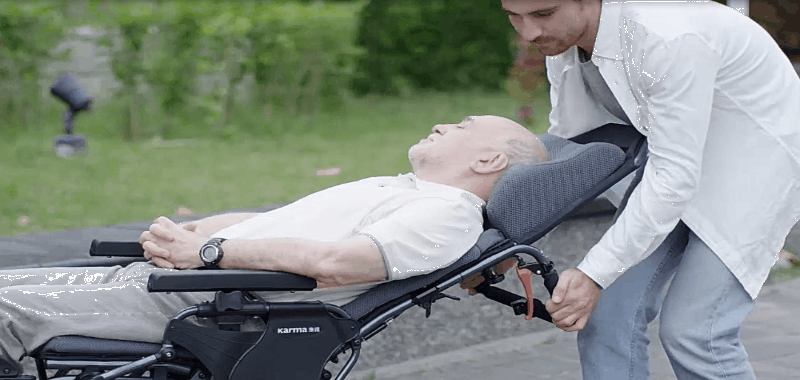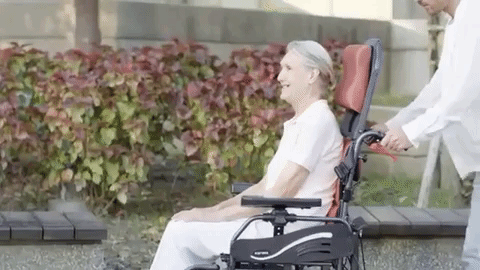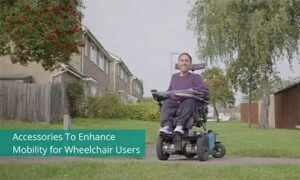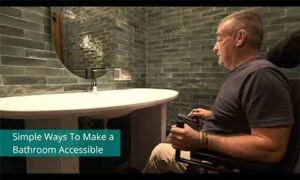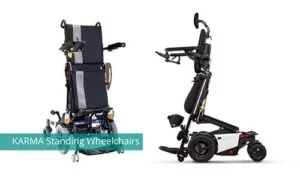In the last blog, FAQ when buying a wheelchair, we discussed the different levels of mobility and what wheelchair is most suitable within each category. Now we will move on to discuss the benefits and wide range of positioning wheelchairs.
How Does a Reclining Wheelchair Work?
The reclining wheelchair seat works like a car driving seat. As well as sitting upright in a reclining wheelchair, the user can lie flat at almost 180 degrees. The knees can also be raised up to help the user stretch out their hips and lower back. To put it simply, it can extend from a wheelchair to a resting platform, almost like a bed.
Reclining wheelchairs are suitable for users who need to use a wheelchair for long periods of time, thus requiring some posture change to relieve the sitting pressure. When the user goes into the reclining position, their centre of gravity shifts from the pelvis to the back. This is also why the rear wheels are set further back, behind the user’s centre of gravity. Therefore it is not suitable for the user to self propel the wheelchair themselves.
The common pitfall of choosing a reclining wheelchair is to neglect the user’s ability to resist the tendency of sliding out. The motion of the recline will create forces on the skin surface.
How Does a Tilting Wheelchair Work?
The “Tilt-in-Space” wheelchair is designed to keep the user in the sitting position, where the angle of the hip joints is unchanged. Instead, the pressure on the hips is transferred to the back.
How does a reclining and tilting wheelchair benefit elderly users with limited joint movement?
-
There is no change or movement of the joints when tilting, so it is suitable for elderly patients who have stiff joints.
-
Unlike the reclining wheelchair, the ‘Tilt-in-Space’ feature ensures the user will remain close to the seat whilst the chair is tilting to avoid any shear force.
-
By tilting the chair, the caregiver can help the wheelchair user shift the pressure from the hipbone to the back, preventing the body from forming pressure ulcers (bed sores) as well as sliding down.
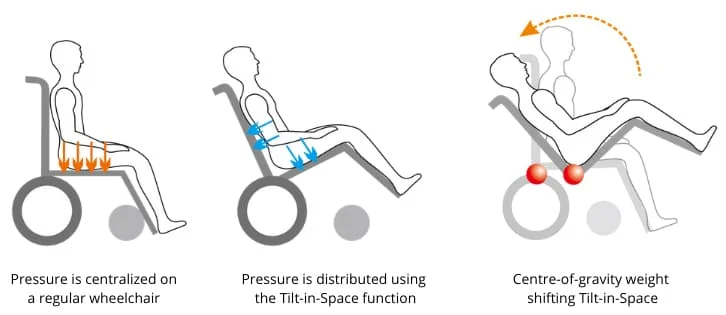
When using a general wheelchair, the pressure is concentrated under the hips (left). When the user is “Tilted-in-Space”, the pressure is evenly distributed to the back and buttocks (middle). The center of gravity shifts when the user is “Tilted-in-Space” (right). Source: Karma Medical
Reclining vs Tilting Wheelchair
When the user’s physical condition is weaker, we would recommend a Tilt and Recline combined wheelchair to reduce sitting pressure on the hips and provide more flexibility to support the hip-joint angle.
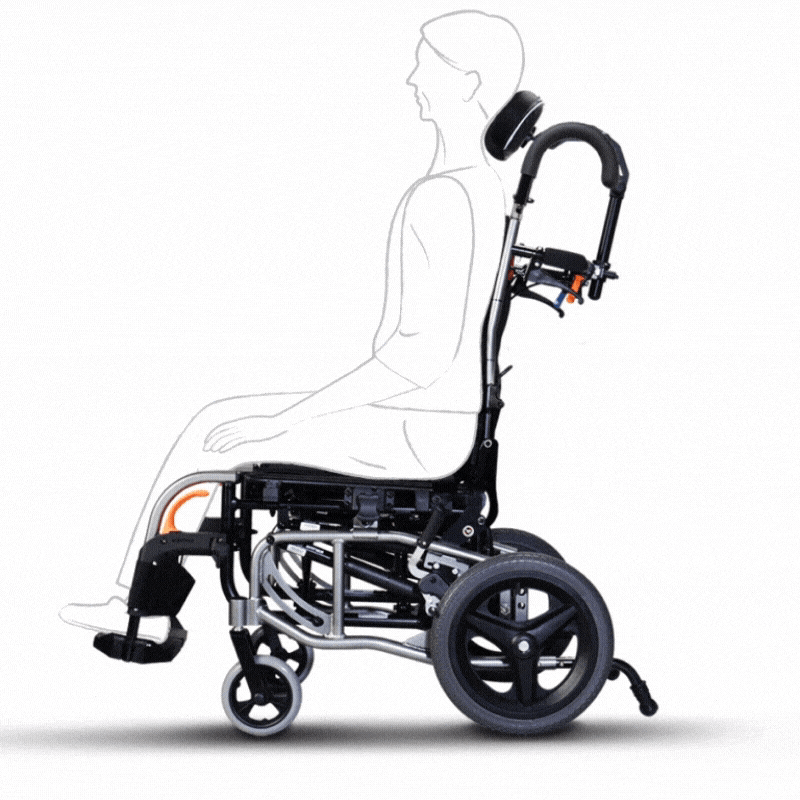
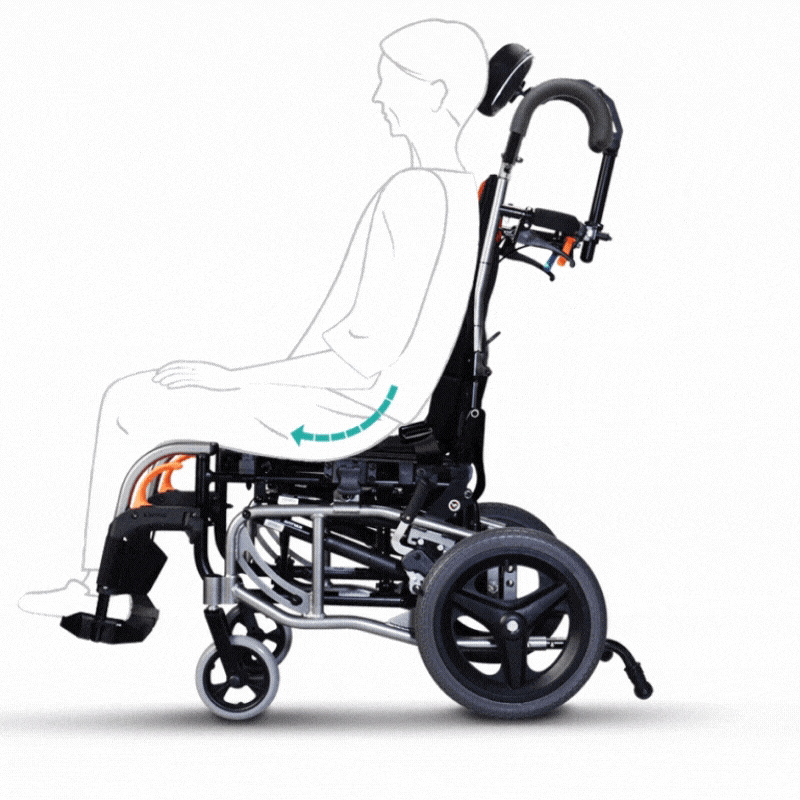
VIP2 is the 2-in-1 wheelchair with the ability to recline as well as Tit-in-Space. Source: VIP2
Which Wheelchair Wheels are Best?
If the user often goes outdoors and needs to cross large thresholds, then large wheels will save the carer a lot of effort. If the wheelchair is mainly used indoors, smaller wheels are lighter, the storage size is smaller, and it has less chances to interfere with transferring to and from the wheelchair.
Summary
We would hope that instead of using straps or restraints to keep the elderly in the wheelchair, more nursing homes can leverage the benefits of Reclining and “Tilt-in-Space” wheelchairs, so the long-term care can be easier for everyone.
Contact us or your local dealer to try out a reclining and tilting wheelchair!
Keep Reading

 Global
Global